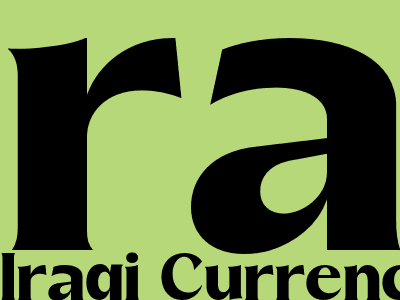
Iraqi Currency: A Comprehensive Guide to the Iraqi Dinar
Understanding the Iraqi Currency
The Iraqi dinar (IQD) is the official currency of the Republic of Iraq. It is issued by the Central Bank of Iraq and is divided into 1,000 fils. The dinar was first introduced in 1932, replacing the Iraqi pound.
The Iraqi currency has faced significant fluctuations in its value over the years, primarily due to economic sanctions, political instability, and inflation. In 2003, after the U.S.-led invasion of Iraq, the currency underwent a major redenomination, with 1,000 old dinars being replaced by one new dinar.
Historical Overview of the Iraqi Dinar
Pre-2003 Era
Prior to the 2003 invasion, the Iraqi currency was pegged to the US dollar at a rate of 1 dinar = $3.20.
However, due to economic mismanagement and international sanctions imposed during the 1990s, the dinar's value plummeted in the black market.
Post-2003 Era
After the redenomination in 2003, the dinar's value initially stabilized. However, due to ongoing security challenges and economic challenges, its value has gradually depreciated over the years.
In 2020, the Central Bank of Iraq devalued the dinar by nearly 20%, from 1,182 dinars to 1,450 dinars per US dollar. This devaluation was intended to address the country's budget deficit and support economic reforms.
Factors Affecting the Value of the Iraqi Dinar
Oil Prices
As Iraq is a major oil exporter, the price of oil plays a crucial role in determining the value of the dinar. Higher oil prices typically lead to a stronger dinar, while lower oil prices can lead to a weaker dinar.
Political Stability
Political stability and security conditions in Iraq have a significant impact on the dinar's value. Periods of instability and conflict can lead to a depreciation of the currency, while periods of stability and peace can support its value.
Economic Policies
The economic policies implemented by the Iraqi government, such as monetary policy and fiscal policy, can also affect the value of the dinar. Sound economic policies can help stabilize the currency, while unsound policies can lead to inflation and a depreciation of the dinar
Conclusion
The Iraqi dinar has faced challenges and fluctuations throughout its history. However, the Iraqi government and the Central Bank of Iraq are committed to implementing reforms and policies to stabilize and strengthen the currency. As Iraq continues to rebuild and develop, the dinar is expected to play a vital role in supporting economic growth and improving the lives of the Iraqi people.